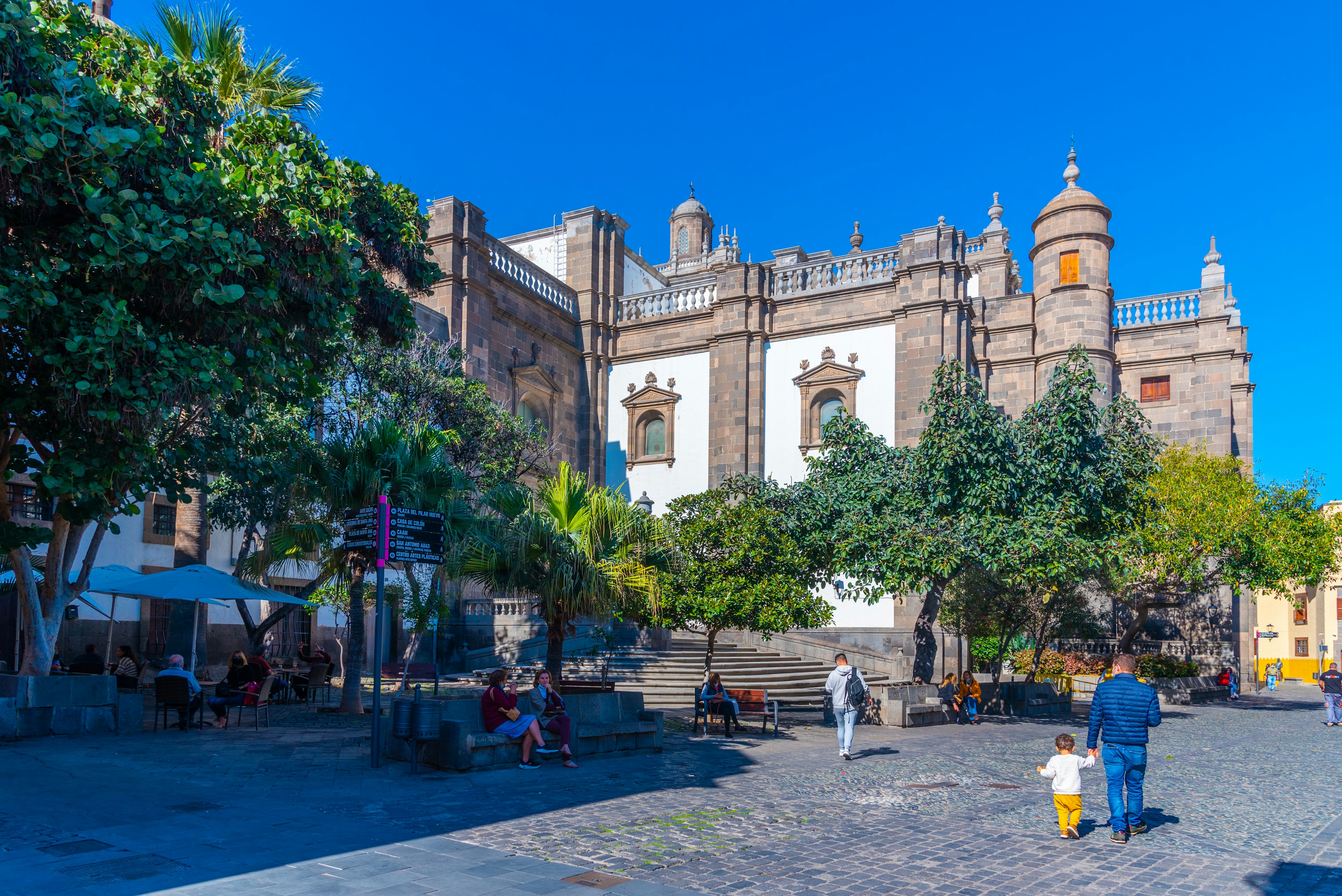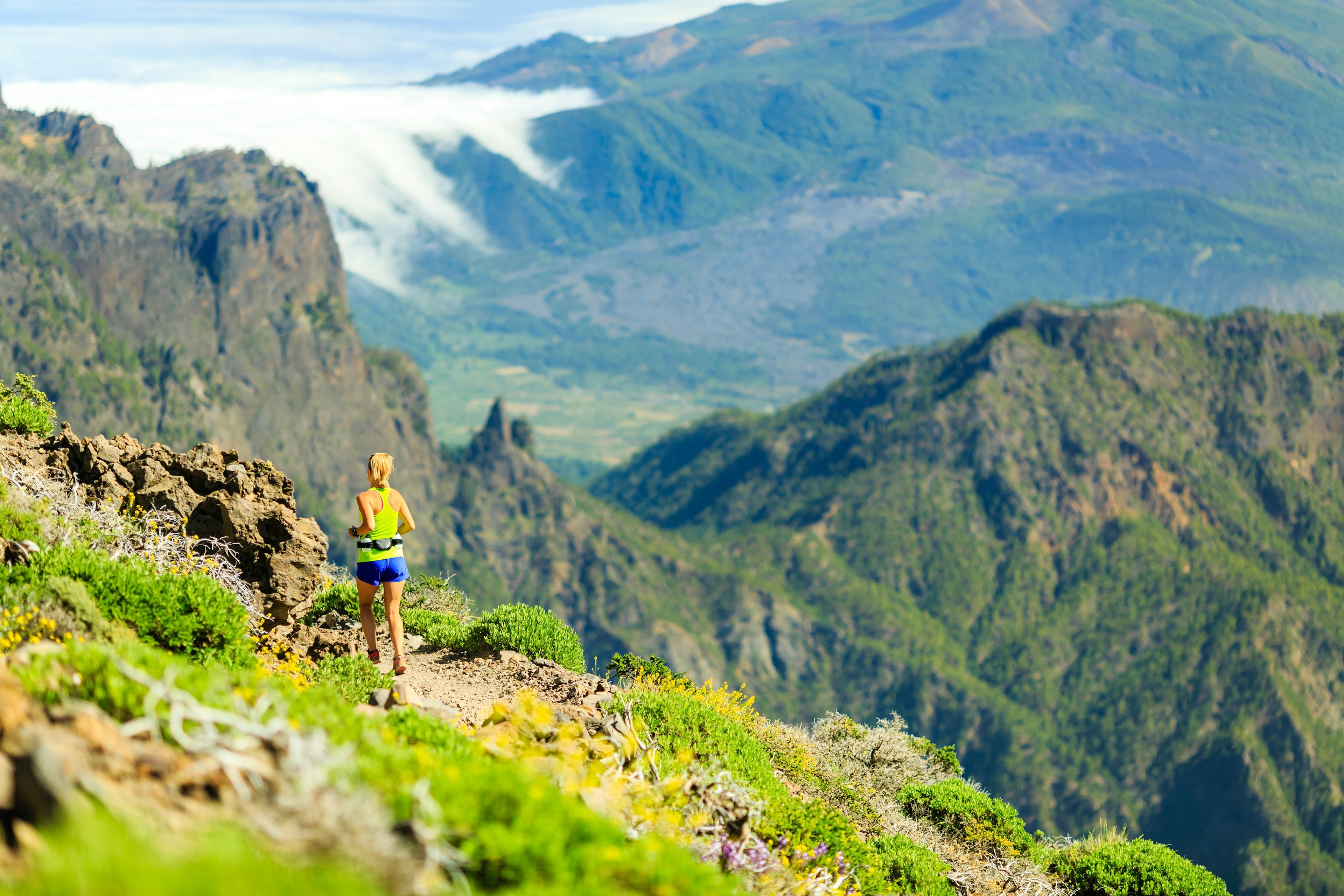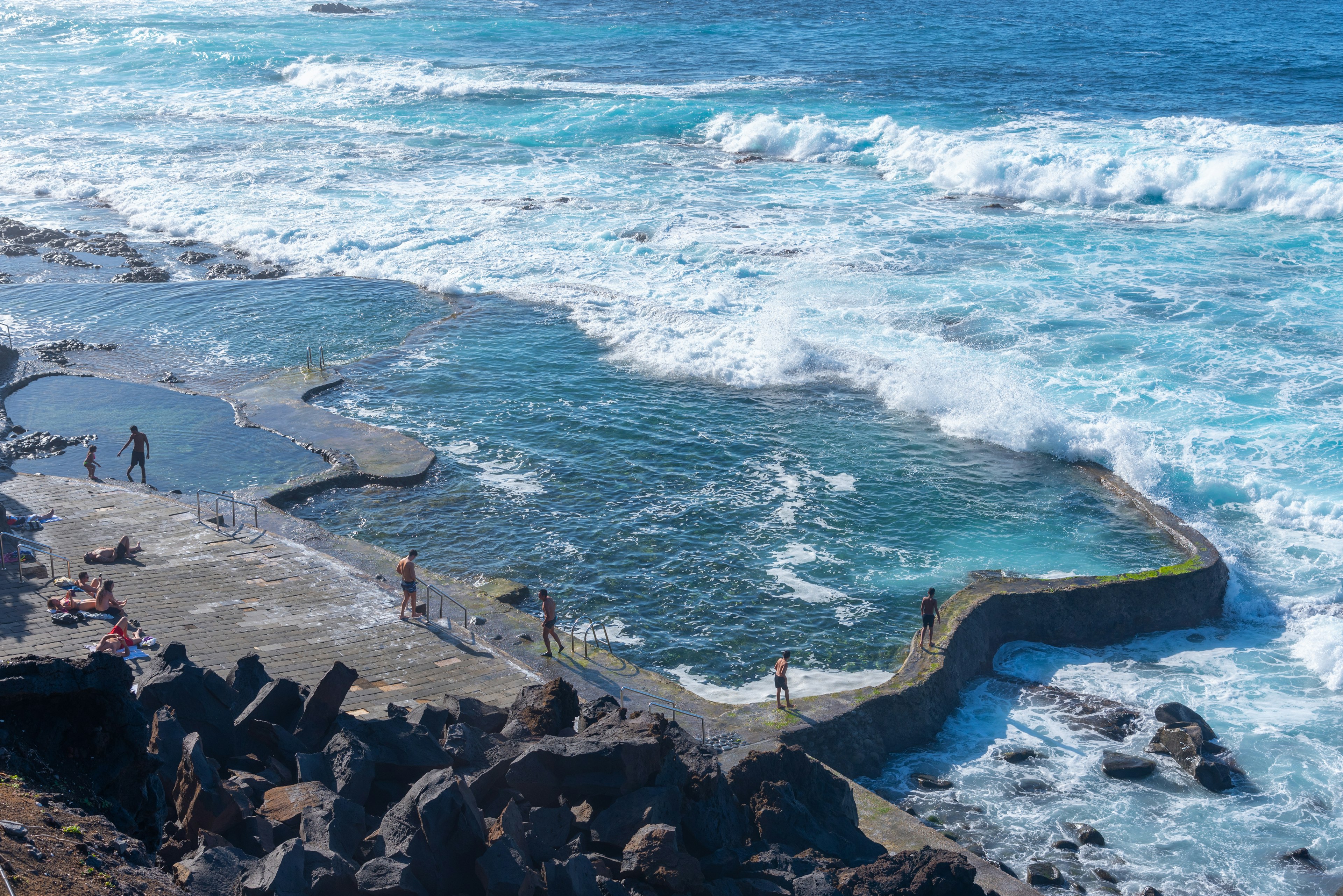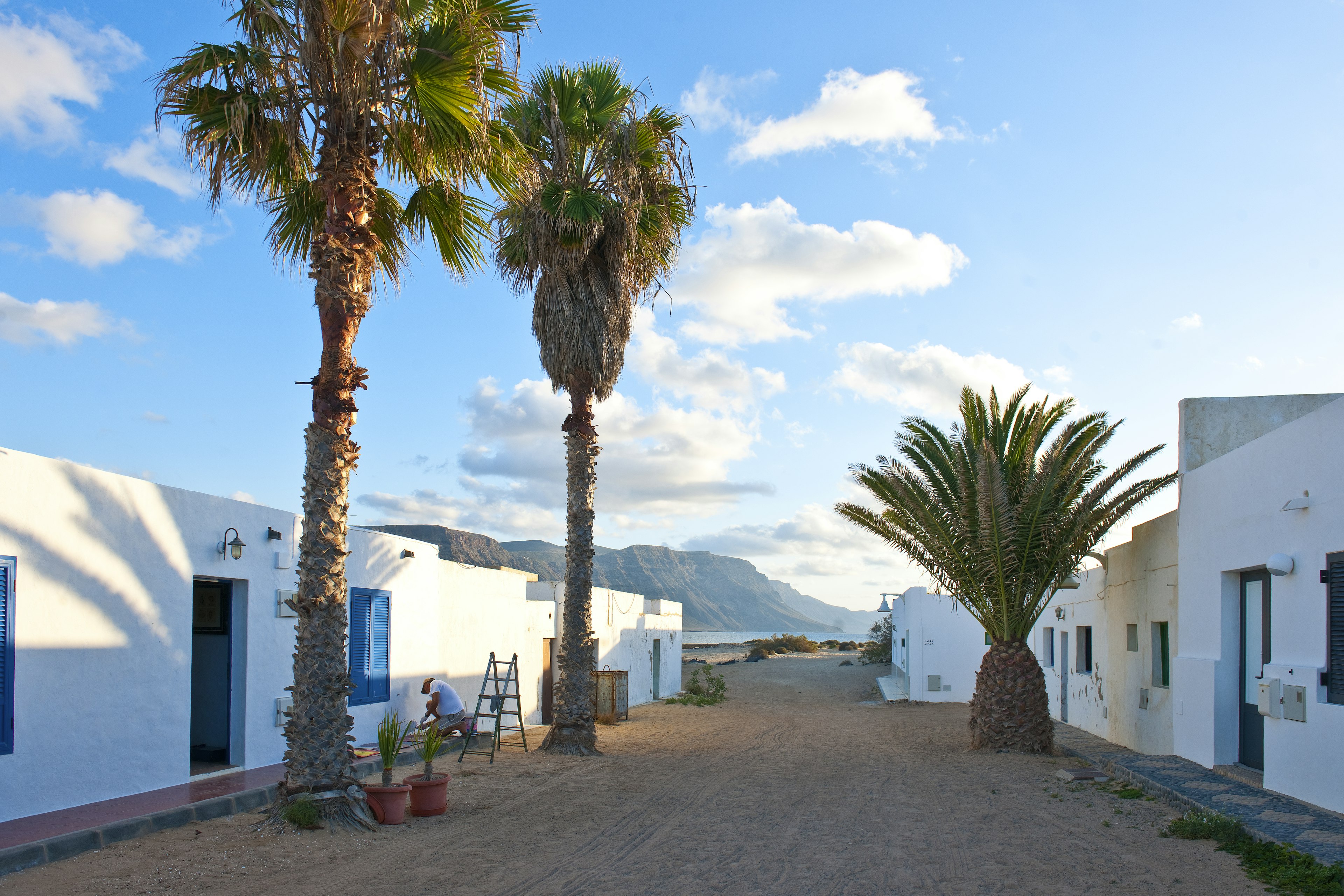[ad_1]
Isabella is one of the writers on the brand new Canary Islands guidebook. Here she helps you decide which of the island is right for your perfect holiday.
Spain’s far-flung Canary Islands are deservedly one of Europe’s most popular travel destinations, but there’s much more to them than the famous “winter-sun” tagline suggests.Eight wonderfully varied islands make up this entrancing volcanic archipelago off Morocco’s Atlantic coast, where eerily beautiful lava-sculpted landscapes sweep from black-sand beaches and sparkling sea pools to misty laurisilva (laurel forests), scented pine groves and curiously craggy peaks.
You could visit year after year (like many travelers do), exploring a different island each time, and still be blown away by the Canary Islands every single trip.
First-timers are often drawn to the larger, better-known Canaries, particularly Tenerife and Gran Canaria, but each island has its own personality. Lanzarote and Fuerteventura on the east side feel beachier, surfier and more laid-back, while the three western islands – La Palma, La Gomera and El Hierro – are much less touristed than the rest.
You don’t have to stick to just one island either, as excellent flight and ferry links make it easy to plan a longer island-hopping trip. No matter your travel style, here’s a guide to finding the Canary Island that’s best for you.
1. Tenerife
Best island for epic hikes, mountain scenery and family trips
The archipelago’s largest and most-visited island combines sun-baked golden beaches and a flourishing gastronomic scene with seemingly endless activities, from cetacean-spotting in Europe’s first Whale Heritage Site to next-level surfing, kitesurfing and hiking. Tenerife is a hugely popular pick for holidaying families, but has enough variety to entertain a wide range of visitors, especially beyond the main south coast beach towns.
There’s the spectacular Parque Nacional del Teide, where Spain’s tallest peak looms 3718m tall and walking trails thread through a moon-like high-altitude valley. Catching a glimpse of El Teide – originally known as Echeyde by the island’s indigenous Guanche communities – here is easily one of the Canaries’ wow moments. More thrilling hikes await in the biodiverse Anaga mountains, where laurel forests carpet the northern landscapes, or across the wild, secluded Parque Rural de Teno in the northwest.
Tenerife’s culture-packed capital Santa Cruz is an enticingly laid-back city dotted with subtropical gardens, creative galleries and bold street art, and also hosts Spain’s most fabulous Carnaval each winter. The less-developed north coast, meanwhile, has a wealth of natural sea pools, sloping volcanic vineyards, organic banana farms and historical villages like Garachico to explore.
Planning tip: If you’re planning to hike to the top of El Teide, you’ll need to book a free permit as far ahead as possible.

2. Gran Canaria
Best island for coasts, culture and city buzz
The most populous of the eight islands, Gran Canaria is best known for its lively southern beach resorts, especially sun-dappled Maspalomas, which is a hub of Europe’s LGBTIQ+ scene and has a much-loved stretch of gold-tinged dunes. The island famously has its own microclimate, which varies from one pocket to the next.
There’s heaps more to discover here beyond the beaches and parties though, starting with the soulful island capital Las Palmas de Gran Canaria, Spain’s ninth-largest city and home to one of the world’s great winter carnivals. With its architecture-loaded old town of Vegueta, lagoon-like Playa de las Canteras and unmatched urban food scene, it makes a rewarding city break if you only have a few days.
Elsewhere across the island, swirls of mist-cloaked mountains give way to desert-like fields and lush laurel and pine forests, while intriguing pre-Spanish-conquest sites like Gáldar’s Cueva Pintada tell the story of Gran Canaria’s indigenous communities. Explore further on a twists-and-turns road trip through the island’s high-altitude center, whose drama peaks at the astonishing Roque Nublo and Roque Bentayga monoliths. Then drop into elevated villages like Artenara and Tejeda, and stock up on creamy queso de flor (flower of cheese) and other local goodies at one of the buzzy farmers’ markets.

3. Lanzarote
Best island for art, beaches and wineries
With brooding volcanic cones, glinting black-pebble beaches and the odd palm-spangled valley, Lanzarote feels like a giant color-shifting natural canvas. So it makes sense that the easternmost of the Canaries captured the heart of the locally born 20th-century artist and environmental campaigner César Manrique, whose impossible-to-miss influence and works await all over the island – from the whitewashed, sky-blue-windowed homes of coastal villages to the inimitable lava-field house at the Fundación César Manrique.
In recent years Lanzarote has grown into a tempting destination for art, design and architecture lovers, but it’s also packed with outdoor fun and has a blossoming, local-rooted food scene. You can’t miss the sprawling volcanic expanses of the Parque Nacional de Timanfaya, which played a key role in creating Lanzarote’s respected wine region, La Geria, where vines grow in mineral-rich volcanic-ash sands.
The beaches here rank among the Canary Islands’ loveliest, too, particularly around southern Lanzarote’s Papagayo nature reserve and wild Famara, which is one of Europe’s top surf spots.
Planning tip: Lanzarote, especially the north, has some of the most magical accommodation in the Canaries, including restored mansions like Hotel Palacio Ico and design-forward havens like Alava Suites.

4. La Palma
Best island for nature, stargazing and offbeat hiking
It’s impossible not to fall for gorgeously green La Palma. Deservedly nicknamed “La Isla Bonita”, the entire island is a UNESCO Biosphere Reserve, with steep rainforested hills and around 850km of hiking routes. Adventure sports abound, from kayaking to kitesurfing, and the pretty capital Santa Cruz de la Palma is crammed with elaborate 16th-century mansions.
La Palma’s most thrilling walking routes revolve around the unmissable 50-sq-km Parque Nacional de la Caldera de Taburiente, where a miles-wide depression was created by a volcano collapsing in on itself. And following the 2021 eruption of the Tajogaite volcano in the south of the island, local businesses have now bounced back, offering new volcano-viewing experiences in this devastated area.
La Palma also happens to be one of the globe’s prime locations for stargazing, and was named the world’s first Starlight Reserve back in 2012. Visiting the renowned Roque de los Muchachos observatory and contemplating the dark, clear skies on a guided stargazing experience with local experts (such as Astro La Palma) is a Canaries-wide highlight.
Planning tip: It’s best to factor in some flexibility for stargazing experiences, as weather changes can cause last-minute rearrangements.
5. Fuerteventura
Best island for beaches and water sports
A UNESCO Biosphere Reserve since 2009, the second-largest Canary (after Tenerife) lures visitors with its dazzling beaches, year-round sunny climate and raw lunar-like beauty. Wind-lashed and evocatively arid, Fuerteventura has the archipelago’s dreamiest sands: from the honey-gold dunes of the protected Parque Natural de Corralejo in the north, to the secluded, undeveloped expanses of Playa de Cofete on the island’s southern tip (catch it at sunset and you’ll see).
The island rivals Lanzarote’s Famara as the Canaries’ top surfing destination, with a laid-back wave-riding scene – for all kinds of levels – centered on the former northern fishing villages of El Cotillo (with surf-whipped sands below cliffs) and Corralejo (more resort-like). You can also go sailing, windsurfing, kitesurfing, paddle boarding and diving, or venture out on under-the-radar hikes, including around the Isla de Lobos nature reserve off Corralejo.
Local tip: Don’t miss Fuerteventura’s greener interior, home to the old capital Betancuria and some of the best restaurants on the island.

6. El Hierro
Best island for diving, walking and getting away from it all
Anyone who makes it to the Canaries’ small westernmost island quickly realizes they’re onto something special. Ringed by impenetrable volcanic cliffs, El Hierro has been a UNESCO Geopark since 2014 and feels much more off the beaten track than the rest of the archipelago, though it’s only a 40-minute flight (or 2.5-hour ferry) from Tenerife. This is largely down to its strong, ongoing efforts to limit tourism development and become the world’s first energy-self-sufficient island.
The last few years have seen El Hierro gently emerge on the travel map for Spanish visitors, but it’s still a place for remote adventure, local legends and traditional Canarian cuisine. A multitude of quiet hiking paths culminates in the 27km-long Camino de la Virgen, which weaves across the entire island following the trail of the four-yearly Bajada de la Virgen procession.
The jagged coast, meanwhile, is sprinkled with bewitching natural sea pools, such as La Maceta in La Frontera. And the glassy Atlantic waters off El Hierro’s southern shoreline have arguably the best diving in the Canaries, with the Mar de las Calmas marine reserve now slated to become Spain’s newest national park.
Planning tip: The best months for hiking in El Hierro are March to May (for flower-filled landscapes) and September/October (usually good weather).

7. La Gomera
Best island for quiet hikes and green havens
Lushly forested hillsides, dramatic volcanic valleys and a string of pastel-painted villages make bohemian La Gomera a hiker’s dream. Despite its location just off southwest Tenerife, the island has, so far, kept large-scale tourism at bay, with most accommodation in small rural hotels, refurbished farmhouses or self-catering apartments.
The 40-sq-km Parque Nacional de Garajonay at the heart of La Gomera bursts with trails tracking through misty ancestral laurisilva forest, while elsewhere rewarding paths cling to sheer valley walls or meander along the blackened volcanic coastline. When you’re all hiked out, stroll around the colorful coastal capital San Sebastián de la Gomera and relax on its lovely shaded plazas, perhaps over classic specialities like potaje de berros (watercress stew), papas arrugadas (wrinkly potatoes) and fresh goat’s cheese. There’s also a mellow beach scene, mostly around Valle Gran Rey and Playa Santiago on the south coast.
Planning tip: La Gomera has a rich heritage of local crafts; Gomera Corazón Verde offers workshops on making mojo sauces, weaving palm-leaf baskets and more.

8. Isla Graciosa
Best island for off-the-beaten-track beaches
Named the official eighth Canary Island in 2018, serene La Graciosa is just a half-hour ferry ride north of Lanzarote, but feels blissfully remote. On this small, low-lying island, wild golden-white beaches wrap around scorched volcanic cones, and the only way to explore is on foot, by bicycle or by jeep tour. It’s all part of the otherwise-off-limits Chinijo archipelago, a protected parque natural where you might spot dolphins, turtles and a rich variety of birds. Hike or bike over to isolated Playa de las Conchas or Playa Francesa overlooking Lanzarote’s cliffs, before relaxing at one of the easygoing seafood restaurants in the tiny sand-dusted “capital” Caleta de Sebo.
Planning tip: Most visitors explore La Graciosa on day trips from Lanzarote, but staying a night (or a few) is a perfect offbeat escape. From Órzola in northern Lanzarote, ferries run every half hour to Caleta de Sebo (and back) with Líneas Romero or Biosfera Express.
[ad_2]
Source link

